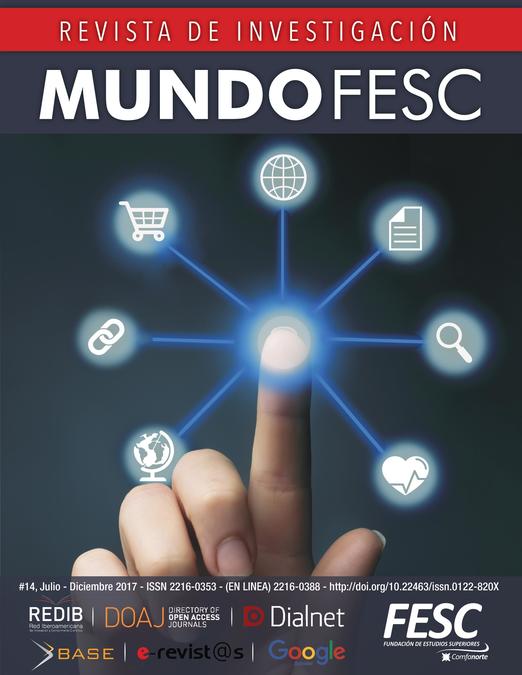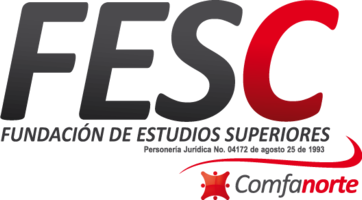Computer tool for pedagogical use for the modeling of bipolar junction transistors BJT
DOI:
https://doi.org/10.61799/2216-0388.143Keywords:
Herramienta computacional, transistor de unión bipolar, modelamiento, proceso de aprendizaje, apoyo docente, Matlab.Abstract
Abstract
The current world is experiencing constant advances in technology, acquisition and updating of information; therefore, the need to acquire new knowledge is evident. Current education seeks to find through technological means the way to make understanding more accessible. The objective of this research work is to design an educational computational tool corresponding to the Electronic I subject aimed at sixth-semester students of the Electronic
Engineer degree at the Francisco de Paula Santander University. This application of educational type presents a methodology based on the analysis of the environment, design of the various configurations of the BJT Transistor, mathematical modeling, development and implementation of the tool, pilot test and employment in the classroom. As a result, a computational tool designed in Matlab (“MATriz LABoratory”) was obtained, which allows to design and calculate the various parameters used in the operating configurations of the bipolar junction transistors (Bipolar Junction Transistor, BJT); as are the half wave and full wave rectifier circuit with diodes (conduct current in the direct direction), fixed polarization and voltage division and the configurations of common emitter, common collector and common base, looking to support the thematic views in the classroom and in the execution of the laboratory practices, obtaining in this way a more interactive learning and that facilitates the reinforcement of the concepts acquired in the subject.
keywords: Computational tool, bipolar junction transistor, modeling, learning process, teacher support, matlab
Downloads
References
Artopoulos, A., & Kozak, D. (2011). estilos de adopción de tecnología en la educación latinoamericana. Revista iberoamericana de ciencia tecnologia y sociedad. Obtenido de http://revistacts.net/files/Artopoulos(2).pdf
Ararat , E. M. (Enero - Junio de 2017). Análisis del uso de las redes sociales en los estudiantes. Mundo Fesc(13), 106-114.
Barragan, D. (2017). Matpic. Recuperado de: Matpic: http://www.matpic.com/esp/matlab/interfaz_grafica.html
Cabrera, J., Sanchez, I. & Rojas, F. (s.f.). Uso de objetos virtuales de aprendizaje OVAS como estrategia de. Asociacion Colombiana de Facultdes de Ingeneiria. Recuperado de: https://www.educacioneningenieria.org/index.php/edi/article/view/602/291
Cardona, H., Burgos, M., González, J., Isaac, I. & López, G. (Junio de 2012). Aplicación en Matlab para la programación del despacho Hidrotérmico. Investigaciones aplicadas, 6(2),42-53. Recuperado de: http://revistas.upb.edu.co/index.pvhp/investigacionesaplicad
Charre, S., Alcala, J., Lopez, N., & Duran, M. (2014). Sistema Didáctico de Control de Presión,. Formación Universitaria, 7(5), 33-40. DOI: https://doi.org/10.4067/S0718-50062014000500005
Gamarra, M., Bertel , F. & Velásquez, J. (2016). Herramienta de Software para el Aprendizaje de Sistemas Difusos en un Curso de Control Digital. Formación Universitaria, 9(4), 33-40. DOI: https://doi.org/10.4067/S0718-50062016000400005
Lopez, C. (2009). Perspectiva de los alumnos por el uso del Blog en el aula. Revista Internacional de Educación en Ingenieria, 2(1). 19-29.
López, J., & Arango, J. (Enero - Junio de 2015). Algoritmo genético para reducir el makespan en un flowshop híbrido flexible con máquinas paralelas no relacionadas y tiempos de alistamiento dependientes de la secuencia. (U. Libre, Ed.) Entramado, II(1).
Lorandi, A., Saba, G., Hernández S. & Guevara, E. (2011). Los Laboratorios Virtuales y Laboratorios Remotos en la Enseñanza de
la Ingeniería. Revista internacional devveducación en Ingenieria, 4. 24-30
Marista, U. (Agosto de 2014). Proceso de enseñanza aprendizaje. Recuperado de: Universidad Marista de Mérida. Recuperado de: http://www.marista.edu.mx/p/6/procesode-ensenanza-aprendizaje
J Mendoza (11 de septiembre de 2007). Polarización del bjt: polarización fija [Mensaje en un blog]. Recuperado de: http://jorgemendozapua. blogspot.com.co/2007/09/polarizacion-del-bjt.html
Monbrun, O. (s.f.). Automatización, c.a. Recuperado de: http://www.eldish.net/hp/automat/matlab.htm
Morales, A. (2009). Innovación social: un ámbito de interés para los servicios sociales. EKAINA. Obtenido de http://www.zerbitzuan.net/
documentos/zerbitzuan/12.pdf
Pérez , O., & Sánchez , J. (2018). Impacto pedagógico del avance tecnológico de las herramientas en el diseño de sistemas digitales. Revista Internacional de Educación en Ingeniería, 10(1). 4-15.
Plata, R. (2008). MatLab & Redes Neuronales. Revistas Bolivianas(1), 96-102.
Porras, H., Sanchez, O., Galvis, J. a., Jaimes, N. A., & Castañeda, K. (2015). Tecnologías “Building Information Modeling” en la elaboración de presupuestos de construcción de estructuras en concreto. (U. Libre, Ed.) Entramado, II(1), 230 - 249. DOI: https://doi.org/10.18041/entramado.2015v11n1.21116
Rosales, G. (2010). Uso de Matlab para la enseñanza y aprendizaje de la solución de las ecuaciones lineales con enfoque geométrico
para ingeniería. Journal of Engineering and Education, 6(10), 59-68.
Salao, J. (2009). Estudio de las técnicas de inteligencia artificial mediante el apoyo de un software educativo. Riobamba: Trabajo fin de
carrera, Facultad de Informática y Electrónica, Escuela Superior Politécnica de Chimborazo.
Sánchez, K. & Guerrero A. (2013). Entorno visual de aprendizaje para las configuraciones de los transistores BJT como amplificadores.
Universidad Cooperativa de Colombia, 11(20)79-86
Semenov, A. (1996). Las tecnologías de la información y la comunicación en la enseñanza. Moscú: Instituto de Educación
Abierta de Moscú.
Torres, Y. & Macias, N. (2009). Software Educativo como apoyo en el proceso de enseñanza aprendizaje del método de reducción en la
resolución de ecuaciones lineales. (Trabajo de pregrado).Universidad de Los Andes.
Vásquez, , R., Posada, N. & Castrillon, F. (2015). Desarrollo de una Estación Experimental Multipropósito para la Enseñanza en Control DOI: https://doi.org/10.4067/S0718-50062015000500004
de Procesos. Formación Universitaria, 8(5),25-34.
Villafuerte , R., Villafuerte, R., Mejia, E. & Medina, J. (2012). Métodos numéricos en el proceso. Revista Internacional de la Educación en Ingeniería, 5(1), 45-53.
Wang, L. & Liu, Z. (2008). Comprehensive Mechanism and Structure-Sensitivity of Ethanol Oxidation on Platinum: New Transition-State Searching Method for Resolving the Complex Reaction Network. Journal of the american chemical society. DOI: https://doi.org/10.1021/ja801648h
Downloads
Published
Issue
Section
License
Copyright (c) 2018 Mundo FESC Journal

This work is licensed under a Creative Commons Attribution-NonCommercial 4.0 International License.






